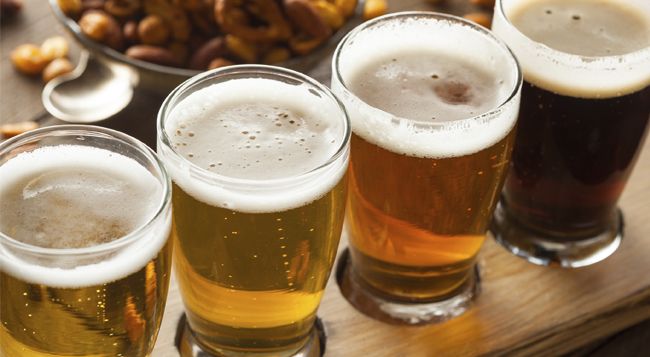Four ingredients and some crafty brewing make a cold glass of beer perfect in the middle of a heat storm or after a long days work.

As an underaged non-drinker, I remember standing at a tall table in the company of grown men joking, laughing and chugging down beer, while I had a non-alcoholic gunner. Watching these men have a good time, I began to develop this mystical idea of what beer was – a gold coloured liquid that made all men jovial; a fizzy looking nectar that quenched ones thirst on a hot and sunny day; a drink all men (and some women) consume when they became real men (and women).
Needless to say, I had a wild imagination. As I grew up and I learned that beer isn’t all that mystical (and in some cases isn’t even all that tasty), I began to appreciate the craft that went into making this multi-layered and complex beverage.
What is beer?
Simple and straightforward - beer is an alcoholic beverage made by fermenting grain. Of course, that’s also like saying - a cake is baked batter. In truth, there’s a lot more to the ingredients and the process involved in the fermentation of grain.
Beer is made of four ingredients: water, grain, hops and yeast; each ingredient and the processes they go through are as important as the ones before them.
Water

Historically, it all started with water. Ever wondered why some parts of the world are famous for specific kinds of beer? Ireland for stout, eastern Europe for Pilsners; Because different parts of the world have different kinds of water, due to the different ratios in mineral composition. We commonly refer to them as soft or hard water.
The hardness or softness of the water affects the fermentation process in different ways, which requires some tinkering with the other ingredients to get the best kind of beer. Hard water in Ireland and England ultimately led to the production of dark beer while soft water in Central and Eastern Europe created light beer.
Today however, brewers are able to tinker with the composition of water to suit whatever kind of beer they’re brewing.
Grain

Through the history of beer production, many kinds of grain have been used including rice, oats and even corn. However, most beers today are made with barley, or rather malt barley.
Malting is a process whereby barley is germinated by soaking in water, before germination is halted with heat, in a process known as kilning.
This process is crucial to the malting of barley for beer because the amount of heat the malted barley receives will affect the kind of beer brewed with it.
Lightly roasted malt barley results in pale beer, like a pale ale whereas a deeply roasted malt produces a dark beer, like a stout.
Hops

Hops are essentially the cause of the “beer taste”- the bittery, fruity, spicy taste that comes in strong and lingers on for a bit. The Hop plant is a vine that looks more like a weed (in a not so coincidence, it is a relative of cannabis). The hop flower, which resembles a pine cone is the actual part that is used in the brewing of beer, to give beer its flavour and scent.
Yeast

Yeast is a single cell organism that is widely used I many gastronomical fermentation processes, including baking. When yeast is added to anything with sugar, it consumes the sugars and replicates producing carbon dioxide and alcohol as a bi-product. It is these bi-products that make yeast so useful to brewers.
Because variety is the name of the game, different kinds of yeast are used to produce different kinds of beer. Similar to the malt, it’s all about the temperature – yeast that operates better in warmer temperature is used to produce ales while yeast that work better in cooler temperature are used to produce lagers.
So, there you have it: four ingredients and some crafty brewing. Mystical? Probably not, but it doesn’t make a cold glass of beer any less enticing in the middle of a heat storm or after a long days work.
In the next part of our Beer Breakdown, we take an in depth look at lager beer.
Thirsting for a beer? Maybe some good ribs to go with it? Check out our selection for sinfully delicious pork
